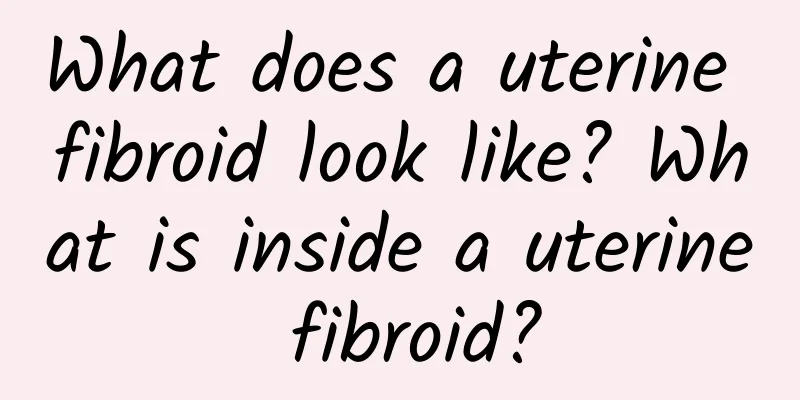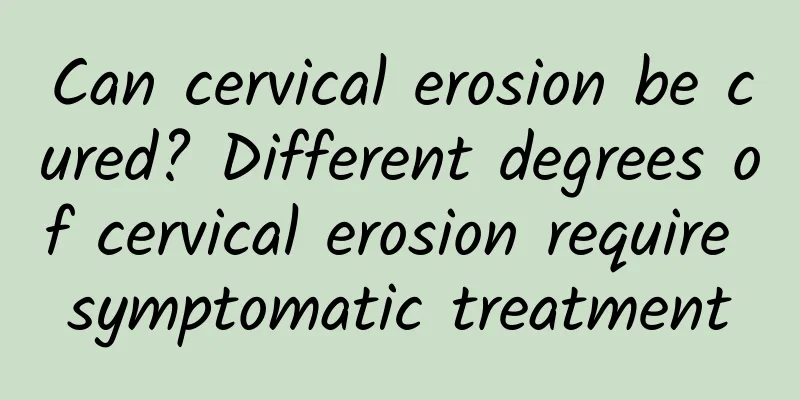What does a uterine fibroid look like? What is inside a uterine fibroid?

|
Uterine fibroids are common benign tumors in women. They usually grow inside the muscle wall of the uterus, but they may also grow outside the wall of the uterus. For many women, uterine fibroids is a relatively unfamiliar term. They don't know what uterine fibroids look like inside, nor do they understand what is inside uterine fibroids. So, let’s take a closer look at what’s going on inside uterine fibroids. Uterine fibroids are masses formed by the muscle tissue on the uterine wall. They are usually composed of multiple muscle cells, which proliferate and expand without limit to form a nodular mass. Depending on the location of their growth, they can be divided into subendometrial, subserosal, myometrial and endometrial types. 1. Subendometrial uterine fibroids: This type of fibroid grows under the endometrium and protrudes into the uterine cavity to form one or more nodules. In subendometrial uterine fibroids, the nodules are usually round or oval, with diameters ranging from a few millimeters to a few centimeters. 2. Subserosal uterine fibroids: This type of fibroid grows under the periuterine membrane and protrudes outside the uterine cavity without causing much impact on the uterine cavity. Subserosal uterine fibroids are usually round or oval in shape and usually have a large diameter, which may reach several centimeters or even larger. 3. Myometrial fibroids: This type of fibroid grows in the uterine muscle wall and merges with it. Myometrial fibroids are usually flat in shape, appearing as a large, thin area that cannot be clearly distinguished from the uterine muscle tissue. After understanding the different types of uterine fibroids, let’s discuss what is inside uterine fibroids. In fact, uterine fibroids are mainly composed of muscle tissue, and their appearance is similar to muscle. However, uterine fibroids are not just a bunch of muscle cells, but also include a certain number of blood vessels, fibrous tissue and other cell components. The size and shape of uterine fibroids vary from person to person. Some may be very small, only a few millimeters in size, while others may be very large and even fill the entire uterine cavity. In summary, no matter what type of uterine fibroids, its internal structure is mainly composed of muscle cells and other tissue components, and its appearance presents different shapes and sizes. For female friends, it is very important to understand the manifestations of uterine fibroids as early as possible and avoid some bad living habits. If you suspect that you may have uterine fibroids, it is recommended to seek medical attention in time for further examination and treatment. |
Recommend
Is Bartholinitis harmful to the body?
Bartholin's gland inflammation usually occurs...
The manifestations and characteristics of various types of incomplete abortion in traditional Chinese medicine
Incomplete abortion is one of the more common com...
What should I pay attention to after an abortion?
What should I pay attention to after an abortion?...
Here are five things you need to check before having a painless abortion:
Painless abortion is one of the abortion methods....
What is ectopic pregnancy and what are its symptoms
What is an ectopic pregnancy? What are its sympto...
How to cure cervical warts
Cervical warts are a relatively common type of tr...
Why can't you eat taro if you have uterine fibroids? Can you eat taro if you have uterine fibroids?
Why can't people with uterine fibroids eat ta...
Surgical methods for uterine prolapse
Surgical methods for uterine prolapse: Uterine pr...
What are the self-care measures for pelvic peritonitis?
Everyone knows that the occurrence of pelvic peri...
Brief analysis of the main symptoms of cervical hypertrophy
Compared with other cervical diseases, the sympto...
What to eat and what not to eat for uterine fibroids? What Chinese medicine is best for eliminating uterine fibroids?
Uterine fibroids, one of the common gynecological...
What medicine should I take to treat uterine fibroids during menstruation? What should I eat to detoxify during menstruation if I have uterine fibroids?
Uterine fibroids during menstruation are one of t...
Experts explain the causes of secondary dysmenorrhea
The incidence of secondary dysmenorrhea is relati...
Can Bartholinitis Affect Life Expectancy?
As the diseases around us continue to increase, w...
Women with uterine fibroids may find themselves with vaginal bleeding
Patients with uterine fibroids may find themselve...









